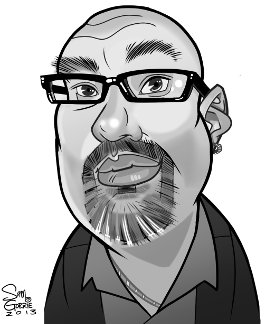Stephen Vance, Editor
 There’s a lot less tension in the council chamber these days when the annual auditor’s report of Meaford’s finances is presented, and that’s a good thing.
There’s a lot less tension in the council chamber these days when the annual auditor’s report of Meaford’s finances is presented, and that’s a good thing.
Many readers will remember the horrible position this municipality was in back in 2010, with some $3 million in accumulated deficits that had to be dealt with by draining municipal reserve accounts to virtually nothing, combined with great concern among many residents about the growing long-term debt.
As a result, in 2011 Meaford’s cash and investments were dangerously low, with the municipality having just $573,000 on hand, while at the end of 2016 Meaford had nearly $9 million in the bank, putting the municipality in a much better position to deal with ever-increasing infrastructure needs.
To right Meaford’s financial ship, a much loathed ‘five year plan’ was implemented in 2010, aimed at replenishing municipal reserves, and putting the municipality on more solid financial footing. That five year plan brought with it double-digit municipal property tax increases (softened a little by the council of the day clinging to the optics of ‘blended rate’ increases that amounted to just five percent when the county and school board portions of the municipal tax bill were factored in) not for five years, but four, due to managing to accomplish in the first four years what had been planned over five.
In recent years property tax increases have been minimal, the municipality has money in the bank, and they’ve been spending more and more each year on road and bridge rehabilitation projects, particularly in our rural areas, and they’ve managed to do all of that without adding to the long-term debt.
On Monday council received the annual audit report of Meaford’s finances for 2016 conducted by BDO & Company, and there was nothing but good news in the report.
Long term debt continues to decline. Just five years ago Meaford carried long-term debt of more than $10.5 million, while at the end of 2016 the municipality owed $3 million less, with $7.4 million in long-term debt. At the same time, municipal reserve funds have continued to be replenished, and long-neglected capital projects to fix our roads, bridges, and other infrastructure are slowly being addressed.
As much as things have improved, there’s still work to be done. Compared to other municipalities, Meaford’s reserve fund levels are still a little low. In 2016, Meaford’s reserves were equal to 46.8 percent of expenses, while the average among all municipalities in four counties (Grey, Bruce, Dufferin, and Simcoe) is 56.73 percent – not that it’s a competition, but the more Meaford can tuck away in reserve accounts, the easier it will be to fund capital needs, either through wise use of reserve funds, or taking on new debt.
When we’re talking about millions of dollars, it can seem like a lot of money, and it is, but Meaford’s hard-earned improvements in its financial position doesn’t mean that we’re now on easy street – far from it.
Meaford might have much less debt and much more money in the bank today than it did five or six years ago, but that doesn’t mean we can now have zero tax increases and that champagne will flow from our taps, but rather we’re closer to being in a position to begin to properly address infrastructure needs – but there will never be enough money in the coffers to tackle all of our infrastructure needs, not even close. Like all municipalities, our roads, bridges, and pipes in the ground will quickly gobble up any gains we make, but at least now we’re in a position to make gains on infrastructure. We couldn’t have said that just five years ago.
While there might be much less tension around the council chamber these days with our vastly improved financial position, that tension will no doubt be transferred to budget time each year as council tries to prioritize infrastructure funding needs, and to fund infrastructure projects in such a way that reserve funds are maintained and that any debt taken on is sustainable – and with the large number of roads, bridges, and pipes in the ground that currently need or will soon require attention (not to mention the need for a new library), it won’t be easy. We’ve already seen evidence of this with council’s continued agonizing of what to do about a pair of single-lane bridges on the fringes of our municipality that an outside consultant and an environmental assessment have both concluded should be removed for good. On paper that might very well be the most practical solution, given that there are 79 more bridges that future councils will have to address in the coming years, but life doesn’t happen on paper, and council has to struggle with the impact such a decision will have on those who have relied on those bridges for generations. As I said, it won’t be easy.
In the world of municipal administration, often when you cure one headache, the next is just around the corner.










